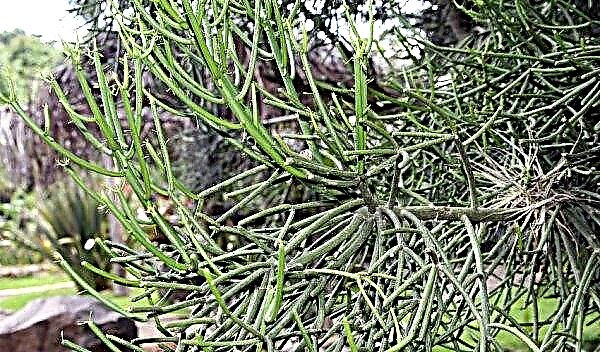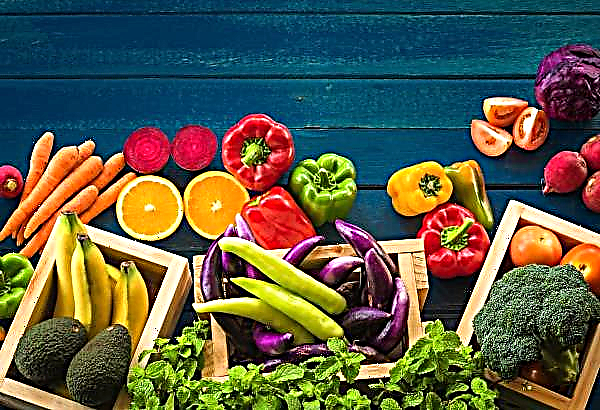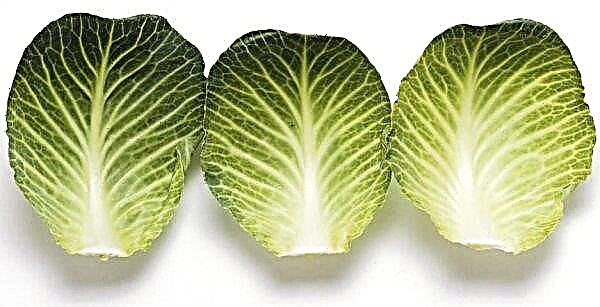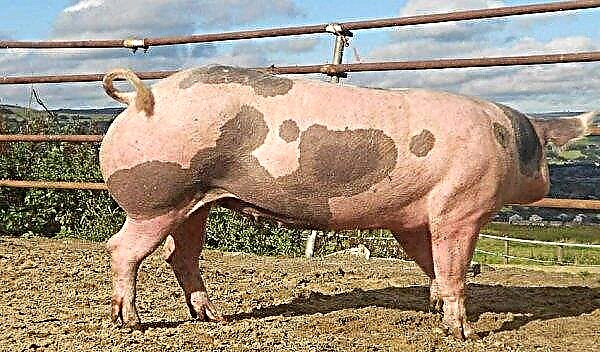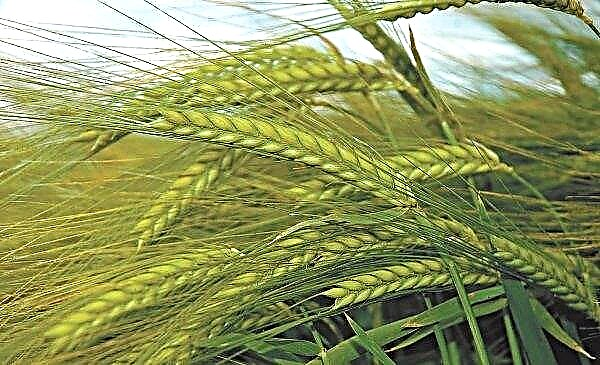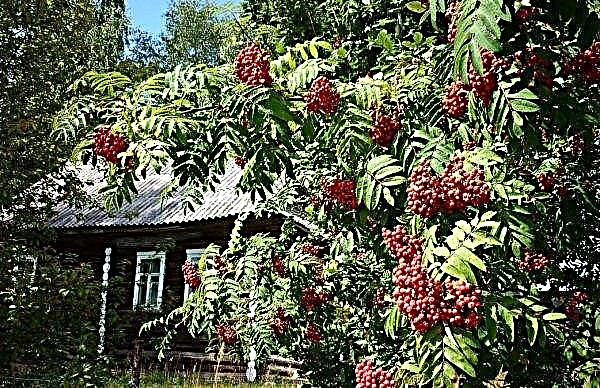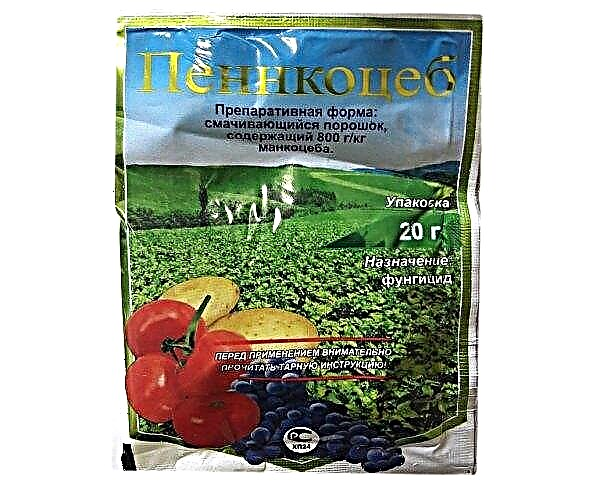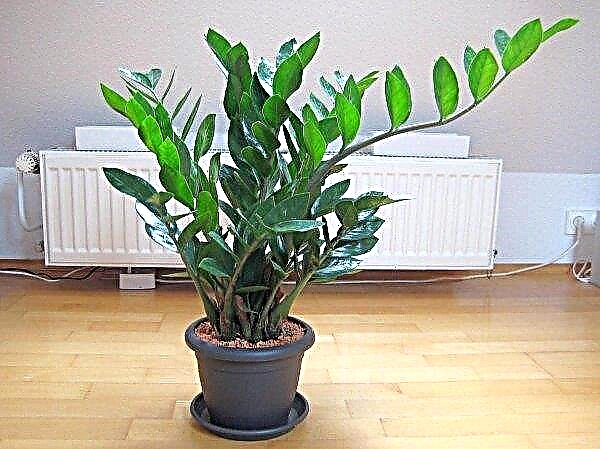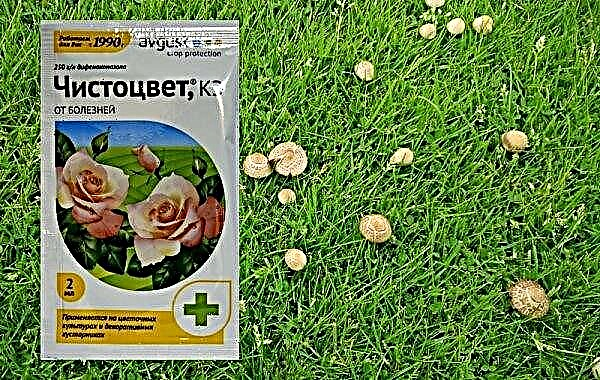Cultivating tomatoes in a warm southern climate is relatively easy. Residents of the northern and circumpolar regions are also not averse to join their cultivation. Over the past few years, the variety "Red Guard" managed to win a landslide victory on garden fronts. From the article you will find out due to what characteristics it has become so popular.
Grade description
In 2012, Ural breeders introduced a new variety with the belligerent name "Red Guard". The variety is labeled “f1”, that is, it is a hybrid bred as a result of crossbreeding in the first generation and using the phenomenon of heterosis.
This so-called hybrid power is expressed in the following characteristics:
- early ripening (65 days after sowing);
- superdeterminant compact bush (height usually does not exceed 80 cm);
- average productivity (2.5–3.5 kg);
- lack of stepsons;
- dark green ordinary leaves;
- placement on the bush according to the brush method (7–9 fruits ripen on each brush);
- friendly ripening of fruits of a bright red hue, which determined the name of the variety;
- fairly large (about 230 g) round-shaped fruits;
- dense, slightly ribbed peel of the stalk, not prone to cracking;
- the pulp is juicy, fleshy, sugary, without white veins;
- small amount of seeds;
- pronounced pleasant, sweet taste;
- universality of application (suitable for salads, juices, sauces, preservation);
- undemanding to lighting and temperature;
- high resistance to frost;
- immunity to fungal infections.

Advantages and disadvantages
- Those who have already grown the "red guard", highlight the following advantages of the variety:
- precocity
- unpretentiousness;
- sufficiently high productivity;
- resistance to diseases and cold;
- good taste;
- high content of ascorbic acid, lycopene, fructose, sucrose;
- universality;
- high storage and transportability.
In preparation for cultivating the variety, you need to remember the following nuances:
- grow it better in a greenhouse / under the film;
- tomato is characterized by low germination of crops;
- susceptible to whitefly pest attacks;
- requires partial pinching and tying.
Self-growing seedlings
The highest yields of this variety will be when grown in a greenhouse or greenhouse. Pre-sowing seedlings.
Optimum timing for sowing
It is best to sow the seeds of these tomatoes in mid-March. After two months, the seedlings will be ready for planting in the ground.
Important! If the greenhouse operates in a heated mode, it makes no sense to use the seedling method. You can immediately sow in open ground. But it should be remembered that the ripening period will increase slightly.
The soil
This variety is not too picky about the soil, but the soil should still be like this:
- easy;
- fertile (a combination of garden soil, compost and river sand is suitable);
- with the addition of a small amount of wood ash and superphosphate;
- on which unsweetened crops had previously grown (best of all are onions, cabbage, cucumbers, peas);
- properly crafted.
In the fall, the necessary fertilizers must be added to the soil.
And before sowing, the land is disinfected in one of the following ways:
- calcined in the oven for 15 minutes;
- it is frozen several times at a temperature of –15 ° C;
- hot air in a double boiler.
Capacity for growing
It is most convenient to use special containers with a height of 15 cm, but also fit:
- small glass jars;
- glasses;
- small boxes;
- peat tablets.
Did you know? Experienced gardeners argue that when digging land from the beds and moving it into a bucket, a violation of the soil structure occurs. In this regard, they recommend taking a long knitting needle and piercing the soil 30 times in a bucket to improve air access.
After the appearance of the first true leaves (usually 10 days after emergence), the seedlings are dived into large pots (for better development of the root system), so you need to take care of the availability of such containers in advance. When growing seedlings in peat tablets, seedlings are simply rearranged into larger peat pots, pouring soil into the bottom and between the walls.
Seed preparation
Due to the not very good germination of this variety, special attention should be paid to seed preparation:
- You need to buy them in specialized stores with certificates or from friends, trusted manufacturers.
- Store purchased seeds at room temperature and humidity not more than 60% (otherwise, under the influence of moisture, the temperature inside the seeds rises and they lose their germination).
- Wrap the seeds in a damp cloth or soak in warm boiled water for no more than 20 hours. If the seeds were purchased at the store, you need to clarify whether they are treated with stimulants, otherwise the soaking procedure will negate this treatment.
- Tomato seeds cannot be heated. For additional protection against diseases, you can etch them with a solution of phytosporin or potassium permanganate.
- For earlier and healthy seedlings, you can use the growth stimulants "Kornevin" or "Epin-extra."
- After processing, dry the seeds.
Important! Using biostimulants, one should not overdo it, otherwise the opposite effect will occur. They must be used in accordance with the instructions, not forgetting to wear gloves to protect the skin.
Sowing seeds
Sowing includes the following steps:
- Treated, loosened, well-moistened soil is poured into prepared containers.
- In the soil make holes 1-2 cm deep.
- The bottom can be poured with a warm solution of sodium humate (to accelerate seedlings).
- 3-4 seeds are placed in each hole. The distance between the holes is 2-3 cm.
- The soil is compacted and watered with warm water.
- Before sprouting the sprouts, the containers are cleaned in a dark and warm (+ 25 ° C) place.

Seedling Care
After the shoots appear, the daylight for seedlings should be 12 hours. Seedlings are usually placed on an unshaded window sill.andfacing south. Young seedlings will need watering as necessary (the soil should not be dry, but not too waterlogged). The air temperature in the room where the seedlings are kept can vary between + 20 ° C– + 25 ° C. After seedlings, the shoots can be treated with Epin-Extra or Zircon preparations to increase root formation and immunity against heavy metals.
Seedling hardening
"Guard" is a cold-resistant variety that easily tolerates spring frosts, but it will also be useful for it to harden seedlings (especially if you plan to plant shoots not in greenhouse conditions, but on a site without shelter). The procedure is carried out a week after diving seedlings. Young seedlings are taken out to the open air, first for half an hour, and then all for a longer period of time, gradually bringing to 8–9 hours a day. Harden plants in good weather (in the absence of frost, rain and strong wind).
Did you know? Some summer residents do not make supports of wood and metal, but inventively use for this purpose the stalks of corn and sunflower growing nearby.
Planting seedlings in a permanent place
Planting is carried out in mid-May, when the seedlings grow to 20-30 cm.
The greenhouse by this time should meet the following requirements:
- the soil is renewed, fertilized, weeds removed;
- walls and ceilings treated with copper sulfate for disinfection;
- there are no cracks in the material of which the greenhouse is made (film / glass);
- there is a window in the wall for ventilation;
- thermometer available.
Planted in a certain pattern.
Conditions must also be met:
- The soil is warm (+ 15 ° C– + 18 ° C), otherwise the roots will rot and will not take root.
- Seedlings are placed at the rate of 2-3 bushes per square meter. When planting in open ground, up to 4 bushes per square meter are allowed.
- Wells for planting should not be deeper than 20 cm, so that the sprinkled stalk does not let out new roots and does not inhibit the vegetation.
- The step between the holes is 40 cm;
- The bushes are staggered in 2 rows with a distance between rows of 50-60 cm.
- The ideal time for landing is evening.
- After the plants are planted, they are abundantly watered with warm water.
Greenhouse and outdoor care
Caring for greenhouse tomatoes has its own specifics, which will be discussed later in the article. Care in the open ground in the case of this variety differs from the greenhouse in the absence of the need to ventilate the premises and the strict obligation of hilling.
Watering and airing
In the early days, plants are not watered, giving them time to adapt. After a week, it is time to irrigate the bushes with warm water under the root, preventing water from entering the leaves. Watering is performed on average once every 4 days, based on the condition of the soil. 2 hours after irrigation, the greenhouse is ventilated by opening a window or door / lifting the film. The air temperature in the greenhouse should not exceed + 25 ° C - + 26 ° C during the day, + 15 ° C - + 16 ° C - at night.
Top dressing
The variety does not require additional mineral fertilizing, but will favorably treat organic fertilizers (for example, bird droppings.) The fertilizer is fermented, then diluted with water. The resulting liquid is watered around the plants.
Stepson
Although the “guards” have a determinant bush, experts still recommend partially pinching the shoots to speed up the harvest. The bush is formed before the first flower brush, and stepsons are left above, on which the main crop develops. There is no consensus on how many stems to form. Most experts argue that 3-4 stems would be optimal.
Soil care
The soil is regularly (every 2 weeks) loosen and weed from weeds.
To reduce the time and effort spent on weeding (and also to preserve moisture), the soil can be mulched, creating a layer of:
- hay;
- straw;
- sawdust;
- compost
- needles.
Bush tying
The bushes of this variety are small and compact, but still need to be tied up due to the rather large mass of fruits and the number of these fruits on the hands. So that the plant does not bend under the weight of tomatoes and does not creep on the ground, the bush is tied to a support at the top. Sometimes even individual brushes are tied. In greenhouse conditions, the trellis method is optimal. On the open ground, you can use both a horizontal trellis, placed between two columns, and a vertical support for each bush.
Preventative treatment
The variety is very resistant to viruses and fungal infections (fusarium, cladosporiosis). As prevention, as already mentioned, it is necessary to disinfect the soil and seeds. The main problem for this type of tomato is leaf damage by a tiny butterfly, whitefly.
Characteristic signs of damage are:
- the appearance of yellow spots on the plant;
- white dots on the back of the sheet;
- curling and drying leaves.
Harvesting
Subject to the above simple rules for care, at the end of June you can see a scattering of bright fruits. Harvesting occurs throughout the summer and due to the resistance of the variety to cold, even right up to frost. Harvested tomatoes are perfectly stored in wooden crates (up to 30 days) and well transported. Variety "red guard" is popular with farmers in the northern and subpolar regions due to the good ratio of "unpretentiousness - productivity." For the same reason, the variety is suitable for cultivation by novice gardeners and those who can not devote much time to caring for tomato crops.
Variety "red guard" is popular with farmers in the northern and subpolar regions due to the good ratio of "unpretentiousness - productivity." For the same reason, the variety is suitable for cultivation by novice gardeners and those who can not devote much time to caring for tomato crops.

